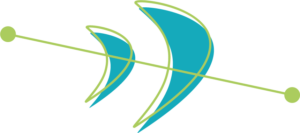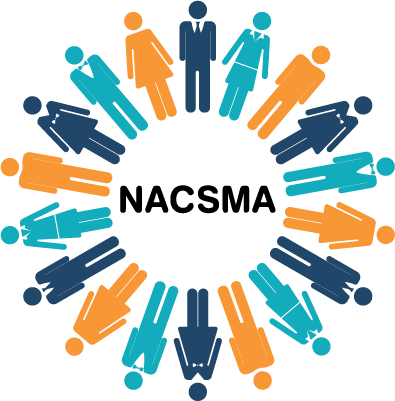CALL TRAFFIC ANALYSIS AND FORECASTING
Gathering the Data
Forecasts are just as much an art as a science. Forecasts are projections; they are not goals and objectives. Forecasts provide an expectation of the future based on facts, historical data, experience and insight.
Step one is gathering the data., You want stacks of historical data. Past history is the best indicator of the future. The first place to check is your contact center platform. A robust platform will have historical reports stored for up to a year. If your platform emails or FTP’s reports automatically, many managers save those reports. Seek out those managers. Can you get two years’ worth of data? Much more than two years isn’t relevant with the fast pace of change. Less than 12 months doesn’t represent the full picture.
Then scour the data for any one-offs., Look for data that looks abnormally low or high, or missing data. Then determine what is triggering this out of ordinary data. Is that “zero” you see on a holiday and the contact center was closed? Does that holiday change to a different day each year like July 4th or is it the same day like Memorial Day, which is the last Monday in May? For example, If July 4th moves from a Saturday to a Tuesday how does that impact call volumes on the days preceding and the days following? This is the “art” part of forecasting where your experience, intuition and judgment come into play. The data is factual but not always representative.
In this next step, you want to “normalize” the data up or down. , Let’s say on Thursdays, call volume is easily 5000 calls for the day, but you notice that on the second Thursday it is only 3000 calls. Further research shows that the contact center experienced an outage for four hours that day. Since that’s not a normal Thursday event, you can assume that if there wasn’t an outage, the contact center would have handled 5000 calls on that day as well. The actual number for that day is correct yet you want to use the normal day of 5000 calls for forecasting purposes.
On the other hand,, if every third Thursday the contact center completes mandatory compliance training then the lower number is an accurate one and for forecasting this would be the correct number to use. If the event is repeatable and predictable then these lower numbers are realistic.
The key is to determine what is driving the data aberration. You must get to the bottom of that question.
Outbound Call Traffic
Contact centers MAKE outgoing calls; outbound services make outgoing calls for your organization. Examples are:
Appointment Setting
Collection Reminders
Lead Generation
Insurance Sales
Market Research
Mystery Shopping
Payment Protection
Event Registration
Telesales
Warranty Programs
Fraud Prevention

The Truth About Forecasts
No matter how hard you try to make it an accurate forecast it won’t be perfect. If you get 98% accuracy that’s a good day.
It is an estimate, a prediction of the future. Ask yourself how off is your forecast and why? You mostly likely are using a complex method when the simpler ones are more accurate. Complicated methodologies hide key assumptions or make key assumptions that may not fit your business. Stick to simple methodologies.
If you don’t trust the raw data, you can’t trust the forecast either. The quality of the data is proportional to how often you use it, believe it and correct it. When you use data regularly you become familiar with its inaccuracies and can get corrections made. When you clean up the data it becomes a powerful tool for forecasting and therefore you’re more likely to trust it.
Bias also gets in the way of forecasts., Let’s face it, when you have to make assumptions it is difficult to eliminate adding some bias. Just be conscious that this happens.
And finally, technology doesn’t make forecasting better.
A robust forecast comes from sound logic in your methodology. The technology is the tool to make the methodology more efficient and thus more successful.
Inbound Call Traffic
Contact centers TAKE incoming calls; inbound services take incoming phone calls to your business. This includes:
Telephone answering service
– Cell phone
– Medical calls
– Overflow/after hours
Appointment Management
Building Maintenance
Customer Service
Direct Response
Disaster Response
Dispatch
Emergency Call Center Services (911)
Help Desk
Hotlines
Live Chat
Loyalty Programs
Order Processing
Product Recalls
Virtual Receptionist
Daily Forecasts
You now have monthly forecasts but a good contact center manager will need to know individual daily predictions as well.
Daily patterns are the easiest to observe by looking at the past couple of weeks. You don’t have to go back through the last two years. Select a couple of normal weeks that don’t have any anomalies. Look at the total Monday volume compared to the weekly total. Repeat for Tuesday thru Friday. These percentages reflect your day-of-week patterns.
You can continue this breakdown, until you get to half hour segments. Forecasts must include not only call volume predictions but should include handle time predictions as well. To calculate workload and predict staffing and schedule requirements later, we need the complete picture of workload. Multiply the number of calls times the average handle time. Review handle time predictions to reflect the time of year, day of week and time of day since call length can vary for numerous reasons.
By taking the time to understand and manipulate the raw data into meaningful information, it helps you make more insightful contact center decisions.
Predicting Monthly Calls
There are three approaches to taking raw data to predict the future:
– Point Estimate is the simplest approach. Any point in the future will match the same corresponding point in the past. The first Monday in June last year will be the same as the first Monday in June this year. Of course with anything too simple it has its shortcomings. It does not take into account any upward or downward trends.
– Averaging Approaches uses historical data. The most accurate averaging approach is weighted averaging where the most recent events are given more weight than older events. For example, call volumes for the first Monday in July over the past three years are 2400, 2500 and 2600. A simple average would be 2500 calls. A moving average might be 2500, dropping the oldest data and a weighted average applies 80% to year one, and only 10% on year 3 giving you a prediction of 2570. This approach also misses the upward and downward trends but it is most likely closest to the actual forecast.
– Time Series is the recommended approach because it involves time series analysis. This is the approach that takes into account the effects of trends, season and monthly differences as well as historical data. The assumption is that call volume is influenced by many factors.
INDUSTRY SERVICE TIPS
1. Today’s advanced multi-level Interactive Voice Response (IVR) systems can automate simple job functions, freeing up your staff for higher-level tasks.
2. Align all business units and choose one cloud based contact center phone system with the capability to manage all types of call traffic; inbound, outbound, and blended.
NEXT STEPS
In developing the contact center strategy, understanding your client’s expectations will guide you to developing an effective customer service strategy. A blended strategy utilizes inbound/outbound/automatic call services and at one time or another you may find that the services of a BPO can be an effective tool. Today’s contact centers are typically blended since many contact centers perform more than one business function. Being crystal clear on the business function(s) and customer expectations will make the call types and technology decisions easier.
VIDEO FROM OUR EXPERTS



INDUSTRY EXPERTS

Company 1

Company 2

Company 3
NETWORKING FOR CONTACT CENTER PROFESSIONALS
ABOUT NACSMA
NACSMA brings together like-minded professionals focused on advancing the customer contact industry and creating career growth.
BEST-IN-CLASS
Management of a best-in-class contact center sites require the continuous review of Agent Sourcing Models, Organizational Training and Management Development Programs.
NACSMA MEMBERSHIP
NACSMA is a professional, non-profit association whose members represent customer contact organizations and the vendors who support them.
IMPLEMENTATION
When a contact center organization expands to an additional site or requires new space, the steps to properly implement are unique to each organization but do have standard phases.
